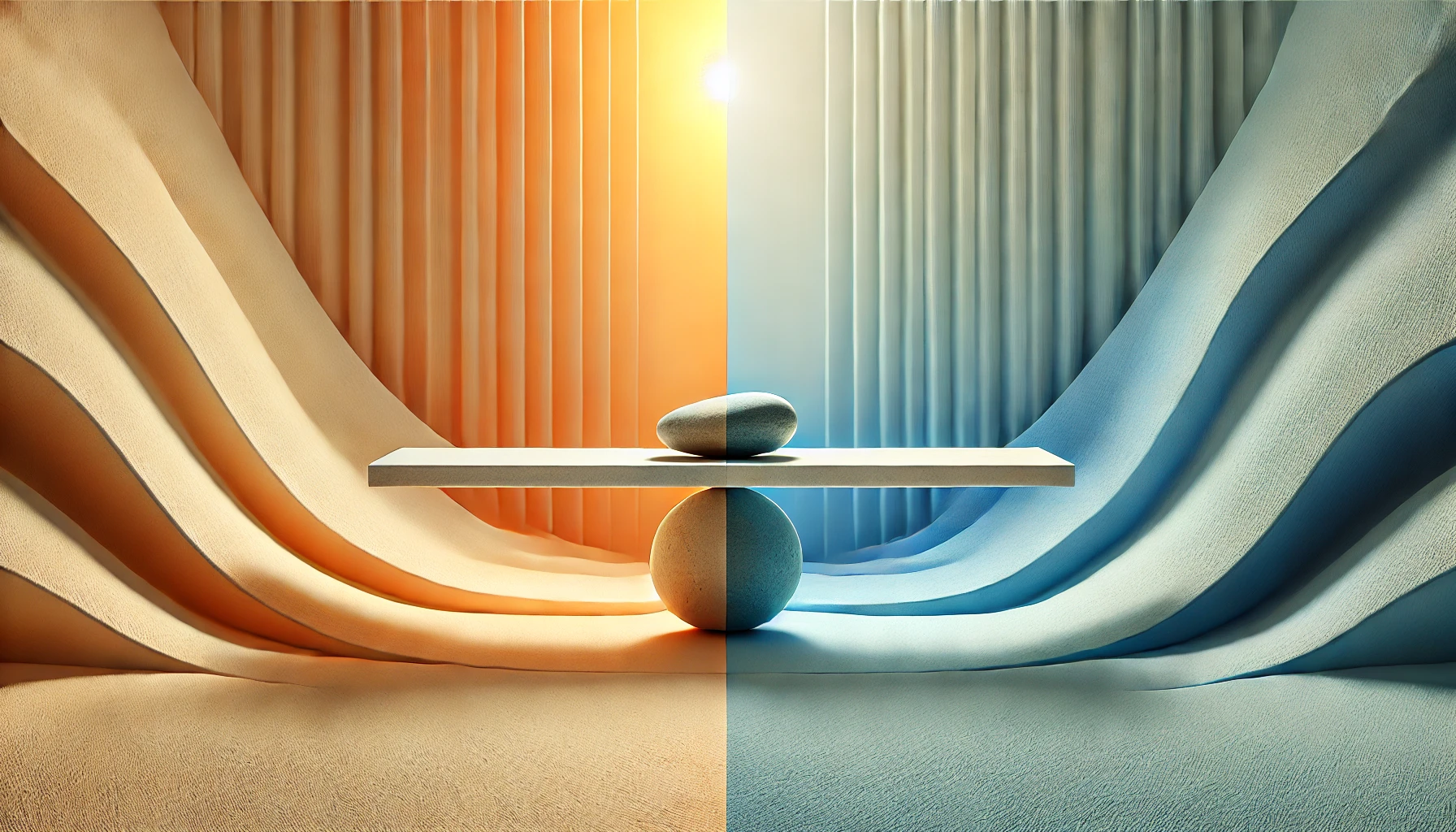We often think of balance as a final destination, a state where all conflicts are resolved and life becomes calm, steady, perhaps even predictable. But balance can be both a noun and a verb. As a noun, it represents a moment of harmony—a place where opposites meet, no longer at odds but settled, unified. As a verb, though, to balance is dynamic. It’s an active process, a movement that adjusts to life’s shifting moments, like the delicate, fluid adjustments of a tightrope walker. This active balance isn’t a fixed state but an ongoing engagement with life’s push and pull, a rhythm that moves with us.
In seeking balance, there’s a common fear that too much stability will drain life of excitement, creating a kind of neutral monotony. Doesn’t balance, after all, mean the end of oscillation, the end of highs and lows? But what if balance isn’t about eliminating our emotional peaks and valleys, but about navigating them with grace? There is a richness to life when we embrace balance as a process, not a destination. In this view, balance becomes a kind of adventure in itself, inviting us to experience every moment fully without the turbulence that extremes often bring.
When we’re constantly swinging between hot and cold, joy and sorrow, excitement and calm, it can feel intense and thrilling, yet ultimately exhausting. These extremes can become like the two sides of a pillow—one warm, one cool, constantly flipped in search of temporary comfort. But what if balance lies not in flipping back and forth, but in finding enjoyment in the side we’re on, in the rhythm of adjusting to each moment as it comes? When we can engage with both warmth and coolness, not needing to escape one for the other, we might discover a more enduring sense of contentment.
True balance, then, doesn’t mean losing the fun in life. It doesn’t mean an end to joy or excitement, but perhaps a deeper, subtler kind of joy—a joy that doesn’t depend on constant change. Instead of seeking thrill only in extremes, we find richness in each moment, even in the simplest experiences, like a gentle breeze or a shared laugh. Balance in this form doesn’t take away our freedom; it gives us the space to experience life without constantly being pulled by highs and lows.
This path invites us to see balance not as a destination that ends life’s variety, but as an inner stability that allows us to enjoy that variety without being swept away by it. In embracing this rhythm of life, we might find not only joy in the balance but also a new freedom—a freedom to enjoy warmth and coolness without needing one to escape the other. And in this way, perhaps, we find that balance can be the most dynamic kind of fun after all.



